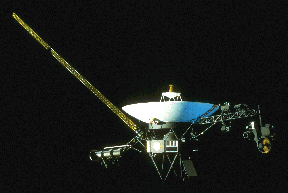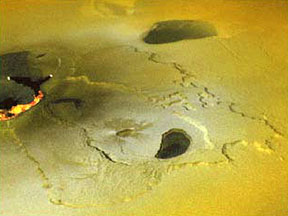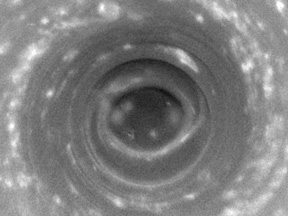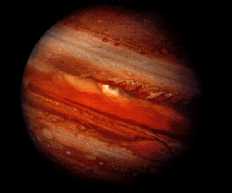This is an image of Jupiter's Great Red Spot.
Click on image for full size
NASA
The Great Red Spot of Jupiter
The Great Red Spot is thought to be a hurricane which has been raging on Jupiter for at least 400 years. The connected page shows an image of the Great Red Spot next to
Tropical Storm Emily for comparison.
You might also be interested in:

Unexpected discoveries made by the two Voyager spacecrafts during their visits to the four largest planets in our solar system have changed the field of space science. Voyager 2 was launched on Aug. 2
...more
The Galileo spacecraft took pictures of some huge volcanoes on Jupiter's moon Io. Scientists say these volcanoes aren't like the ones we have on Earth. Some of the huge ones are active for years! Galileo
...more
If you wanted to go someplace warm for a vacation, would you choose the South Pole? If you lived on Saturn you might! Saturn's South Pole is the warmest place on the ringed planet. Watch out for the weather,
...more
The giant planets have definitely changed since their formation. But how much remains to be seen. Most of the original air of the giant planets remains in place. (The earth-like planets lost most of their
...more
The mesosphere of Jupiter is a region of balance between warming and cooling. That essentially means that nothing happens there. Except for diffusion, the atmosphere is still. Upper reaches of the atmosphere,
...more
As on Earth, the atmosphere of Jupiter consists of a troposphere, stratosphere, mesosphere, and thermosphere. The troposphere is the region where the visible clouds are to be found. The stratosphere, as
...more
The stratosphere of Jupiter is a region of warming as determined by infrared measurements of methane (CH4) in the region. Like the troposphere, the stratosphere is warmed by the sun, warmed by Jupiter's
...more









